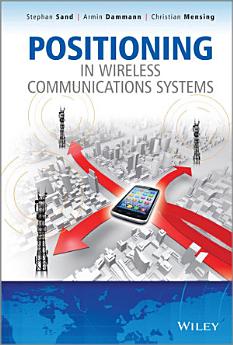Positioning in Wireless Communications Systems
អំពីសៀវភៅអេឡិចត្រូនិកនេះ
The book introduces approaches for determination of parameters which are dependent on the position of the mobile terminal and also discusses iterative algorithms to estimate and track the position of the mobile terminal. Models for radio propagation and user mobility are important for performance investigations and assessments using computer simulations. Thus, channel and mobility models are explored, especially focussing on critical navigation environments like urban or indoor scenarios.
Positioning in Wireless Communications Systems examines advanced algorithms such as hybrid data fusion of satellite navigation and positioning with wireless communications and cooperative positioning among mobile terminals.. The performance of the discussed positioning techniques are explored on the basis of already existing and operable terrestrial wireless communication systems such as GSM, UMTS, or LTE and it is shown how positioning issues are fixed in respective standards.
Written by industry experts working at the cutting edge of technological development, the authors are well placed to give an excellent view on this topic, enabling in-depth coverage of current developments.
Key features
• Unique in its approach to dealing with a heterogeneous system approach, different cell structures and signal proposals for future communications systems
• Covers hybrid positioning investigating how GNSS and wireless communications positioning complement each other
• Applications and exploitation of positioning information are discussed to show the benefits of including this information in several parts of a wireless communications system
ការដាក់ផ្កាយ និងមតិវាយតម្លៃ
អំពីអ្នកនិពន្ធ
Stephan Sand is a senior research engineerat the Institute of Communications and Navigation, German Aerospace Center. He has spent several months on research visits to both NTT DoCoMo R&D, Yokosuka, Japan and the Communication Technology Institute of Swiss Federal Institute of Technology Zürich, Switzerland.
Dr Armin Dammann has been head of the Mobile Radio Transmission Group since 2005 at the Institute of Communications and Navigation, German Aerospace Center. Previously to this he was a member of the research staff since 1995. He has published numerous journal articles and conference papers.
Christian Mensing formerly of the Institute of Communications and Navigation of the German Aerospace Center (DLR), Germany, and now (2013)? with Rohde and Schwarz. His research interests include location strategies in cellular networks and satellite-based navigation systems, and efficient iterative detection techniques.




